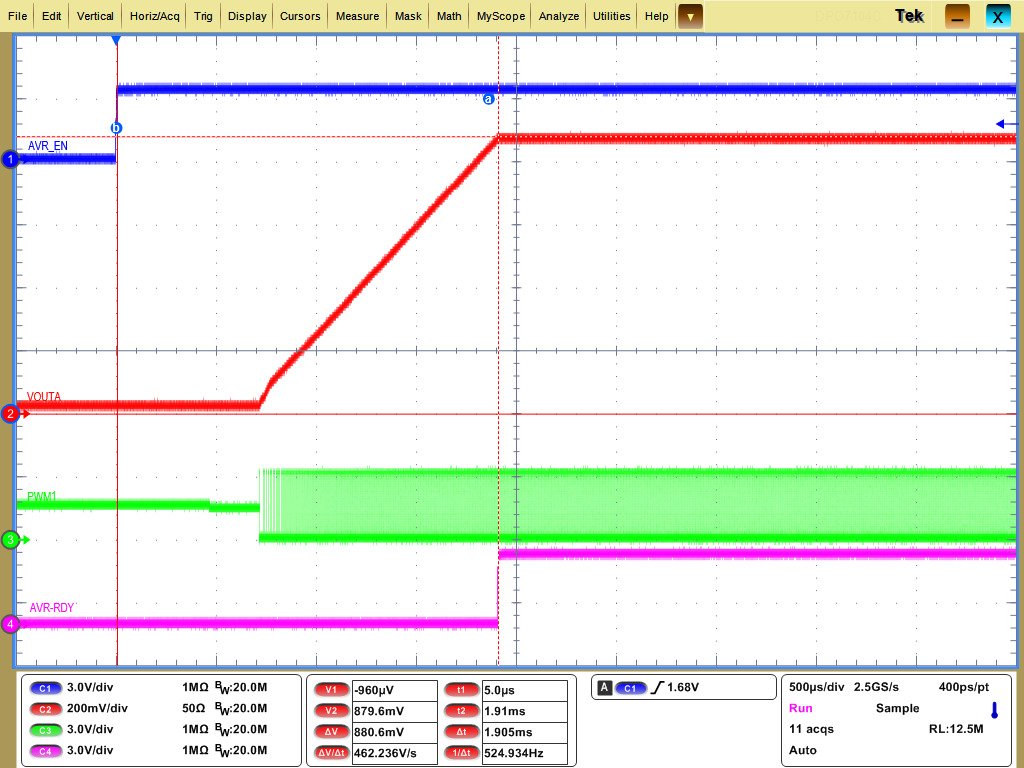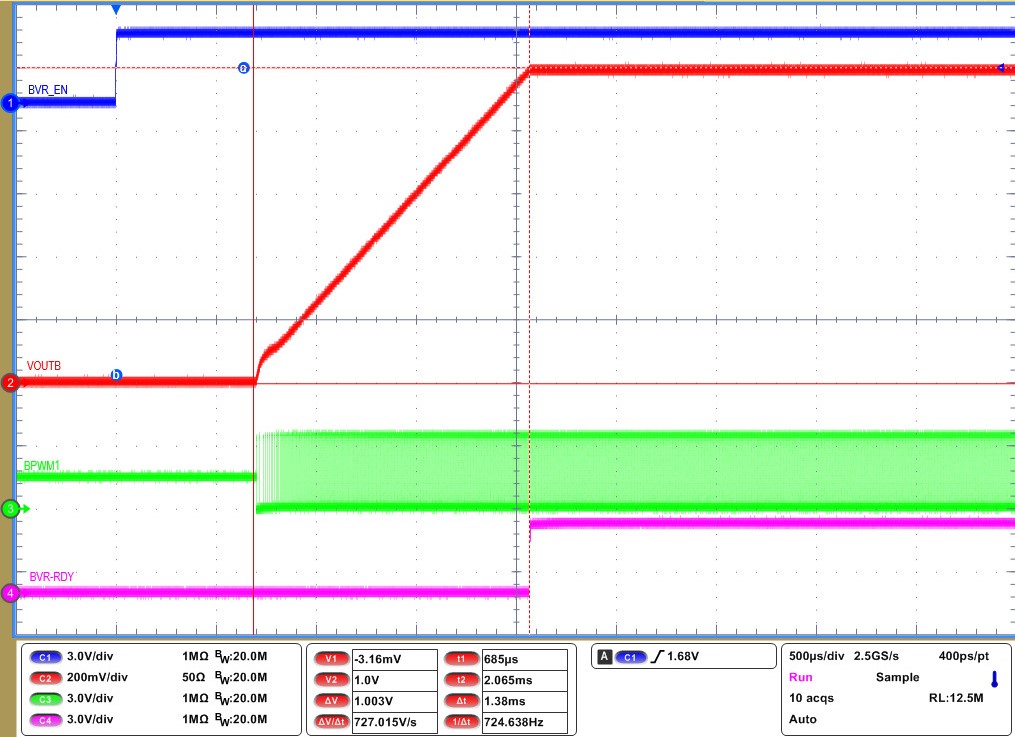SLUUCF8 March 2021 TPS53676
6.1 Start-up Test
Use the following procedure for the start-up test.
RAILA:
- Set the load current to 50 A.
- Make sure all default jumpers (J1 to J9) settings as shown in Table 4-3.
- Connect probes Enable (TP11), VOUTA (J15, BNC cable), PWM1 (TP31), and VOUT_A_RDY (TP22).
- Set the oscilloscope to: 500 μs/div.
- Set the trigger to channel 1 ‘Enable_A’ on the rising edge at about 1 V.
- Turn on the power supply (with the voltage set to 12 V and the current limit set to 10 A).
- Slide the enable switch ‘S1’ to the ON position.
 Figure 6-1 VOUTA Enable startup with TON delay=0ms
Figure 6-1 VOUTA Enable startup with TON delay=0msRAILB:
Set the load current to 10 A.
Make sure all default jumpers (J1 to J9) settings as shown in Table 4-3.
Connect probes Enable_B (TP12), VOUTB (J16, BNC cable), BPWM1 (TP55) and VOUT_B_RDY (TP23).
Set up the time / div on the oscilloscope to: 500 μs/div.
Set the trigger to channel 1 ‘Enable_B’ on the rising edge at about 1 V.
Turn on the power supply (with the voltage set to 12 V and the current limit set to 5 A).
Slide the enable switch ‘S2’ to the ON position.
 Figure 6-2 VOUTB Enable startup with TON delay=0ms
Figure 6-2 VOUTB Enable startup with TON delay=0ms